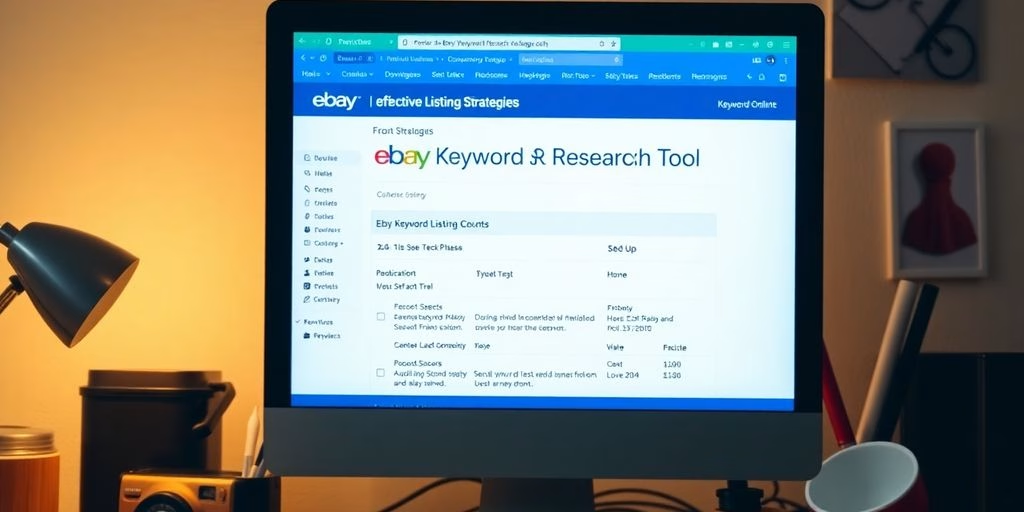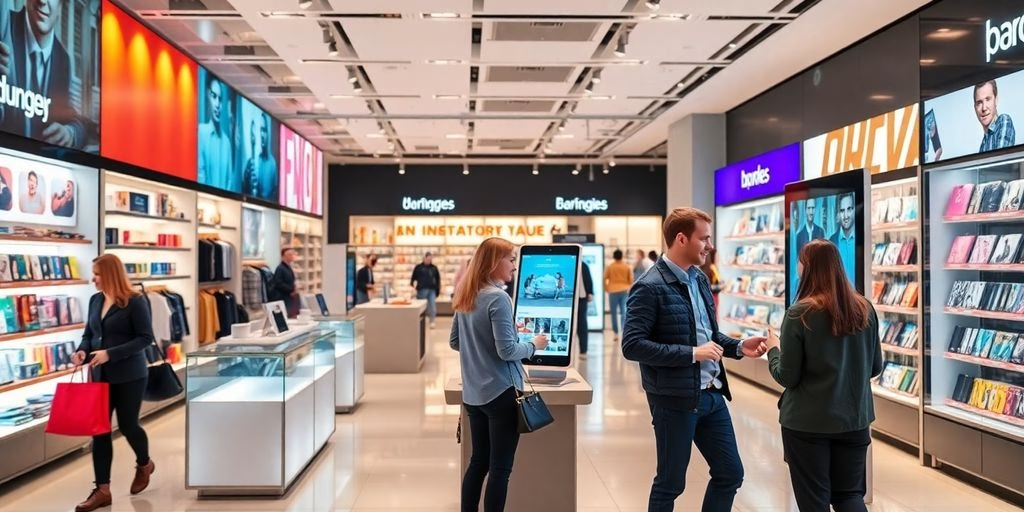Dalam dunia e-commerce yang ramai, di mana setiap milidetik sangat berarti, kecepatan toko Shopify Anda dapat membuat atau menghancurkan kesuksesan Anda. Halaman yang lambat dimuat tidak hanya membuat pengunjung frustrasi tetapi juga berdampak pada keuntungan Anda, yang menyebabkan hilangnya penjualan dan berkurangnya kepuasan pelanggan. Untuk berkembang dalam lanskap kompetitif saat ini, menguasai pengoptimalan kecepatan Shopify sangat penting. Dalam panduan komprehensif ini, kami akan mempelajari seluk-beluk mengoptimalkan toko Shopify Anda untuk kecepatan, mengeksplorasi manfaat dari peningkatan kinerja, dan memberikan tips dan trik yang dapat ditindaklanjuti untuk memastikan toko Anda berjalan secepat kilat.
Daftar Isi
BeralihHal-hal Penting yang Dapat Dipetik
- Memilih tema yang tepat sangat penting untuk kecepatan dan performa. Pilihlah tema yang ringan dan responsif sambil menghindari fitur yang berlebihan.
- Pengoptimalan gambar sangat penting. Kompres gambar, gunakan lazy loading, dan pastikan gambar tersebut responsif terhadap berbagai perangkat.
- Rampingkan aplikasi dan plugin Anda dengan menghapus instalan yang tidak perlu, memilih plugin multifungsi, dan secara teratur memperbarui dan mengauditnya.
- Memanfaatkan cache browser dan Content Delivery Networks (CDN) untuk memastikan waktu muat yang lebih cepat dan kinerja yang lebih baik.
- Analisis dan pantau performa toko Anda secara teratur menggunakan alat bantu bawaan Shopify dan penganalisis performa pihak ketiga.
Memilih Tema yang Tepat: Tulang Punggung Toko Anda
Tema toko Shopify Anda lebih dari sekadar wajah cantik; itu adalah tulang punggung kinerja situs Anda. Memilih tema yang ringan dan dioptimalkan untuk kecepatan sangat penting untuk memastikan waktu muat halaman yang cepat dan pengalaman pengguna yang lancar. Berikut ini beberapa tips untuk membantu Anda memilih tema yang tepat untuk toko Anda:
Tema Ringan untuk Kecepatan
Tema yang ringan sangat penting untuk waktu muat halaman yang lebih cepat dan kinerja situs secara keseluruhan. Carilah tema yang minimalis dan hindari fitur-fitur yang tidak perlu yang dapat memperlambat situs Anda. Beberapa tema ringan yang populer meliputi Fajar dan Kerajinan.
Desain Responsif Itu Penting
Desain yang responsif memastikan bahwa toko Anda terlihat bagus di semua perangkat, mulai dari desktop hingga smartphone. Gunakan alat bantu seperti GTmetrix untuk menguji daya tanggap tema sebelum mengambil keputusan. Tema yang cepat dan responsif dapat membuat perbedaan yang signifikan dalam pengalaman dan keterlibatan pengguna.
Menghindari Kelebihan Fitur
Meskipun mungkin Anda tergoda untuk memilih tema dengan semua lonceng dan peluit, ingatlah bahwa setiap elemen tambahan akan menambah beban pada halaman web Anda. Hindari tema dengan banyak penggeser, animasi yang mewah, dan sistem navigasi yang canggih. Sebaliknya, pilihlah tema yang selaras dengan ide dan suara merek Anda tanpa mengorbankan kecepatan.
Pengoptimalan Gambar: Saus Rahasia

Dalam hal mempercepat toko Shopify Anda, pengoptimalan gambar adalah pahlawan tanpa tanda jasa. Kecepatan dan kualitas yang seimbang adalah nama permainannya di sini. Mari selami seluk-beluk membuat gambar Anda bekerja untuk Anda, bukan melawan Anda.
Merampingkan Aplikasi dan Plugin
Ketika berbicara tentang mengoptimalkan kecepatan toko Shopify Anda, lebih sedikit lebih baik. Setiap aplikasi yang Anda instal akan menambahkan skrip ke situs Anda, yang dapat memengaruhi kecepatannya. Untuk memastikan waktu muat yang lebih cepat, gunakan lebih sedikit program dan lebih sedikit eksekusi kode. Dan jika Anda melihat ada aplikasi yang memperlambat, jangan ragu untuk menghapus instalannya.
Lebih Sedikit Lebih Baik: Copot Pemasangan Aplikasi yang Tidak Perlu
Hindari menyesuaikan perangkat lunak untuk setiap peningkatan yang Anda butuhkan. Sebaliknya, memilih aplikasi multiguna yang dapat mengatasi berbagai masalah dan meningkatkan kinerja toko Anda. Berikut adalah daftar periksa singkat:
- Menghapus aplikasi yang tidak digunakan
- Hapus sisa-sisa JS, CSS setelah aplikasi dihapus
- Pastikan aplikasi tidak memengaruhi kecepatan dan dibuat untuk kecepatan
- Tinjau dan perbarui aplikasi secara teratur
Pilihlah Plugin Multi-Fungsi
Aplikasi serbaguna bisa menjadi teman terbaik Anda. Aplikasi ini mengurangi kebutuhan akan beberapa aplikasi dengan fungsi tunggal, sehingga meminimalkan jumlah skrip yang berjalan di situs Anda. Sebagai contoh, beberapa aplikasi dapat menangani pengoptimalan gambar dan minifikasi kode, membunuh dua burung sekaligus.
Memperbarui dan Mengaudit Secara Berkala
Kami menyarankan untuk mengaudit situs web Anda setiap tiga bulan sekali untuk mengidentifikasi apakah aplikasi yang dihapus telah meninggalkan beberapa JS atau CSS di dalam kode. Alat seperti Page Speed Insights dapat membantu Anda menemukan peluang untuk mengurangi dampak kode pihak ketiga. Pembaruan rutin memastikan bahwa aplikasi Anda berjalan secara efisien dan kompatibel dengan fitur Shopify terbaru.
Ingatlah bahwa setiap aplikasi yang Anda pasang menambahkan skrip ke situs Anda, yang dapat memengaruhi kecepatannya. Untuk memastikan waktu muat yang lebih cepat, gunakan lebih sedikit program dan lebih sedikit eksekusi kode.
Memanfaatkan Cache Peramban dan CDN

Dalam hal mempercepat toko Shopify Anda, memanfaatkan cache peramban dan CDN dapat menjadi pengubah permainan. Cache peramban memungkinkan elemen statis seperti gambar dan CSS disimpan secara lokal di perangkat pengunjung, sehingga mengurangi kebutuhan untuk mengambil sumber daya ini berulang kali. Hal ini tidak hanya meningkatkan waktu muat tetapi juga mengurangi beban server.
A Jaringan Pengiriman Konten (CDN) mendistribusikan aset toko Anda ke beberapa server di seluruh dunia. Hal ini memastikan akses yang lebih cepat ke konten Anda di mana pun lokasi pengguna berada, sehingga pengalaman pengguna lokal menjadi lebih cepat dan efisien.
Pembersihan Kode: Lebih Sedikit Lebih Baik

Ketika berbicara tentang mengoptimalkan toko Shopify Anda, lebih sedikit pasti lebih baik. Membersihkan kode Anda dapat meningkatkan performa toko Anda secara signifikan. Berikut adalah beberapa tips untuk membantu Anda memulai:
Meminimalkan CSS dan JavaScript
Meminimalkan file CSS dan JavaScript Anda dapat mengurangi ukurannya secara drastis dengan menghilangkan spasi, komentar, dan jeda baris yang tidak perlu. Alat-alat seperti "Minifier" dan "Minify - Pengoptimalisasi Gambar & Kode" dapat membantu Anda melakukan hal ini. Hal ini tidak hanya membuat file Anda menjadi lebih kecil, tetapi juga membuatnya lebih cepat dimuat.
Hapus Kode yang Tidak Digunakan
Kode yang tidak terpakai ibarat laci sampah di situs web Anda - kode tersebut ada di sana, tetapi Anda tidak membutuhkannya. Telusuri file Anda dan hapus semua gaya, skrip, dan komentar yang berlebihan atau tidak terpakai. Ini termasuk kode sisa dari aplikasi yang dihapus. Mengaudit basis kode Anda secara teratur dapat membantu Anda menjaga segala sesuatunya tetap rapi dan efisien.
Optimalkan Kode Cair
Kode cair adalah tulang punggung tema Shopify Anda, tetapi juga dapat menjadi penghambat kinerja jika tidak dioptimalkan. Hindari loop Liquid yang berlebihan dan pastikan kode Anda seefisien mungkin. Terkadang, Pengkodean Cairan khusus dapat menggantikan kebutuhan akan aplikasi tambahan, merampingkan toko Anda lebih jauh lagi.
Tinjau kode pihak ketiga yang Anda gunakan secara teratur dan hapus kode yang tidak lagi diperlukan agar tidak memperlambat toko Anda.
Menganalisis dan Memantau Kinerja

Memanfaatkan Alat Bawaan Shopify
Shopify menawarkan serangkaian alat analisis bawaan yang dapat memberi Anda pandangan menyeluruh tentang kinerja toko Anda. Dari laporan penjualan hingga wawasan perilaku pelanggan, alat bantu ini dirancang untuk membantu Anda mengambil keputusan yang tepat. Misalnya, laporan "Ikhtisar Penjualan" memungkinkan Anda untuk memeriksa kinerja penjualan toko Anda selama periode tertentu, mengidentifikasi produk terlaris, dan menganalisis pola pendapatan. Analisis reguler membantu Anda memahami apa yang berhasil dan di mana ada ruang untuk perbaikan.
Penganalisis Kinerja Pihak Ketiga
Meskipun piranti bawaan Shopify sangat tangguh, penganalisis performa pihak ketiga dapat menawarkan wawasan tambahan. Perangkat seperti Google Analytics dan Google PageSpeed Insights dapat membantu Anda memantau kecepatan situs Anda dan perilaku pengguna. Alat-alat ini memberikan laporan terperinci tentang metrik seperti lalu lintas organik, rasio pentalan, dan rasio konversi. Dengan memanfaatkan wawasan ini, Anda dapat kecepatan supercharge dengan mudah dengan teknik cerdas - tidak perlu coding!
Audit Kinerja Reguler
Melakukan audit kinerja secara teratur sangat penting untuk mempertahankan toko yang cepat dan efisien. Audit ini melibatkan peninjauan metrik utama, mengidentifikasi hambatan, dan menerapkan perubahan yang diperlukan. Pantau kecepatan situs Anda secara teratur menggunakan alat bantu seperti Google PageSpeed Insights untuk memastikan Anda tetap terdepan dalam persaingan. Audit performa membantu Anda mengidentifikasi area yang perlu ditingkatkan dan menjaga toko Anda tetap berjalan dengan lancar.
Audit kinerja rutin ibarat pit-stop dalam sebuah perlombaan; audit ini memastikan toko Anda selalu dalam kondisi prima dan siap untuk menang.
Teknik Lanjutan untuk Setan Kecepatan
Bagi mereka yang mendambakan sensasi toko Shopify secepat kilat, teknik-teknik canggih ini akan membawa pengoptimalan kecepatan Anda ke tingkat berikutnya. Halaman Seluler yang Dipercepat (AMP) dapat secara signifikan tingkatkan kinerja seluler Andamemastikan bahwa pencari kepuasan instan dan pembeli yang terdesak waktu nikmati pengalaman yang mulus. Server-Side Rendering (SSR) adalah alat bantu canggih lainnya, yang memungkinkan toko Anda memuat lebih cepat dengan merender halaman di server, bukan di klien. Terakhir, pramuat sumber daya utama dapat membuat perbedaan nyata dalam kecepatan toko Anda, karena memastikan bahwa aset penting dimuat sebelum dibutuhkan.
Buka rahasia kecepatan yang tak tertandingi dengan teknik canggih kami yang dirancang untuk para penggila kecepatan seperti Anda. Kunjungi situs web kami untuk mengeksplorasi lebih jauh dan meningkatkan kemampuan Anda ke level berikutnya. Jangan lewatkan kesempatan untuk meraih kesuksesan yang luar biasa!
Kesimpulan
Dalam dunia e-commerce yang ramai, di mana setiap milidetik sangat berarti, menguasai pengoptimalan kecepatan Shopify bukan hanya kemewahan - ini adalah suatu keharusan. Dengan mengikuti petunjuk praktis ini, Anda dapat mengoptimalkan kecepatan toko Shopify Anda dan meningkatkan kinerjanya secara keseluruhan. Manfaatkan rekomendasi ini, dan Anda akan melihat pengurangan yang signifikan dalam waktu muat halaman. Ingat, situs web yang lebih cepat sama dengan pelanggan yang lebih bahagia. Jadi, apakah Anda mengompresi gambar, memanfaatkan CDN, atau meminimalkan aplikasi, setiap langkah yang Anda ambil menuju toko yang lebih cepat adalah langkah menuju kepuasan pelanggan yang lebih besar dan tingkat konversi yang lebih tinggi. Bagaimanapun juga, waktu adalah uang, dan di arena online, kecepatan adalah nama permainannya.
Pertanyaan yang Sering Diajukan
Apa saja teknik pengoptimalan kecepatan tertinggi untuk Shopify?
Untuk mengoptimalkan kecepatan toko Shopify Anda, pertimbangkan untuk memilih tema yang ringan, mengoptimalkan gambar melalui kompresi dan pemuatan malas, merampingkan aplikasi dan plugin, memanfaatkan cache peramban dan CDN, membersihkan kode Anda, dan secara teratur menganalisis kinerja.
Mengapa pengoptimalan kecepatan Shopify penting?
Situs web yang lambat dimuat dapat mengurangi konversi dan keuntungan, yang menyebabkan hilangnya penjualan dan berkurangnya kepuasan pelanggan. Waktu pemuatan yang lebih cepat meminimalkan rasio pentalan, meningkatkan keterlibatan pengguna, dan meningkatkan kinerja toko secara keseluruhan.
Bagaimana cara memilih tema yang tepat untuk toko Shopify saya?
Pilih tema ringan yang mengutamakan kecepatan dan daya tanggap. Hindari tema dengan fitur berlebihan yang dapat memperlambat situs Anda.
Apa peran pengoptimalan gambar dalam kecepatan Shopify?
Pengoptimalan gambar melibatkan kompresi gambar tanpa mengorbankan kualitas, menggunakan pemuatan lambat, dan menerapkan gambar responsif untuk memastikan waktu pemuatan yang cepat di semua perangkat.
Bagaimana cara merampingkan aplikasi dan plugin di toko Shopify saya?
Copot aplikasi yang tidak perlu, pilih plugin multifungsi, dan perbarui serta audit aplikasi yang diinstal secara teratur untuk memastikan aplikasi tersebut tidak memperlambat toko Anda.
Teknik lanjutan apa yang dapat saya gunakan untuk pengoptimalan kecepatan Shopify?
Teknik tingkat lanjut meliputi penerapan Accelerated Mobile Pages (AMP), rendering sisi server, dan prapemuatan sumber daya utama untuk lebih meningkatkan kecepatan toko Anda.









































































































